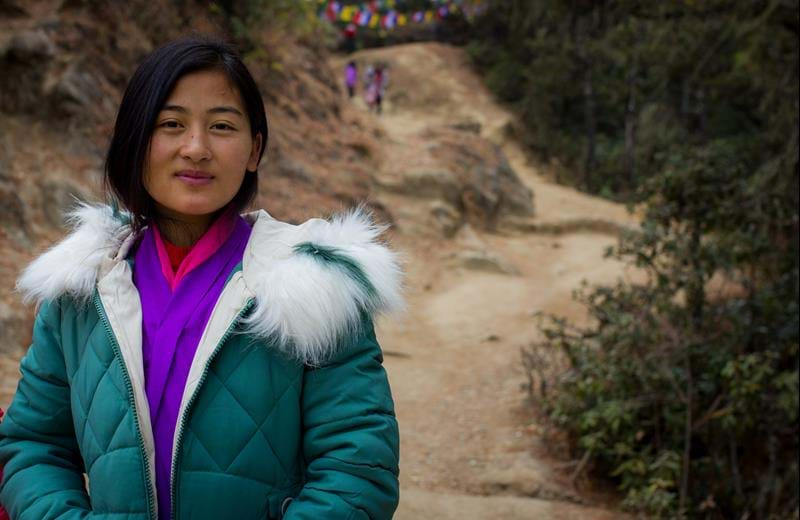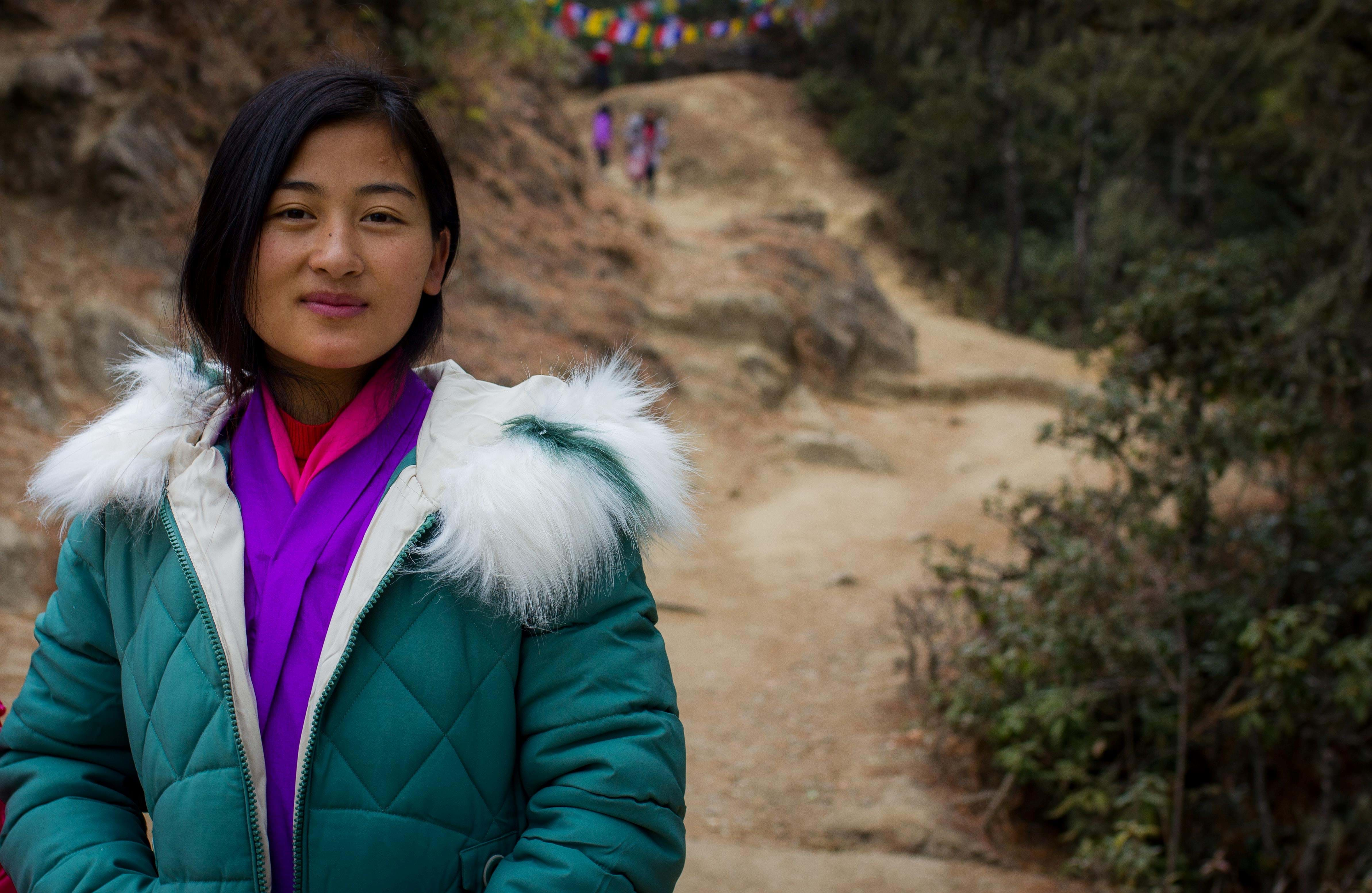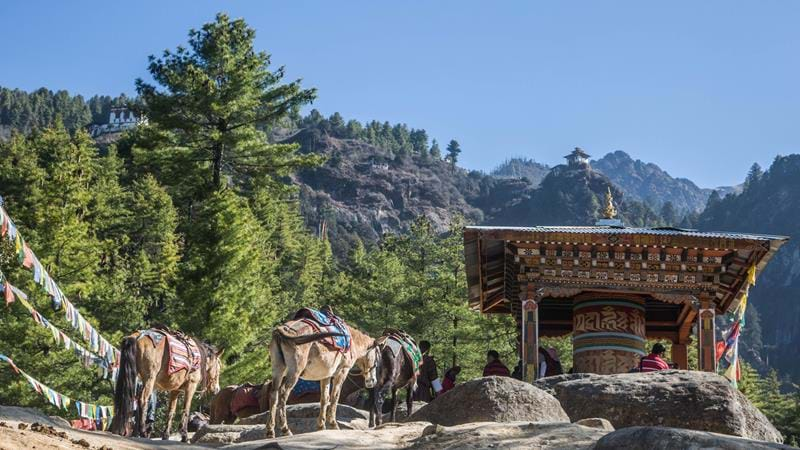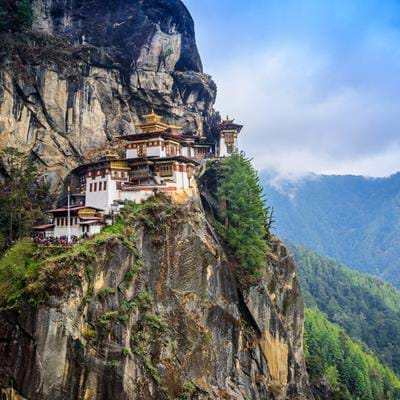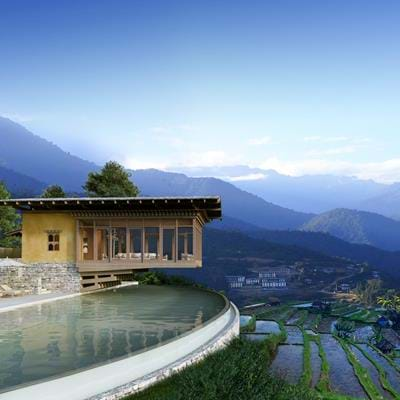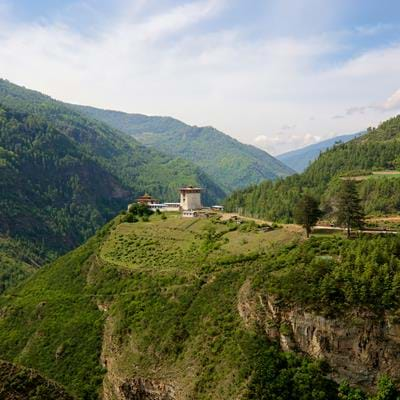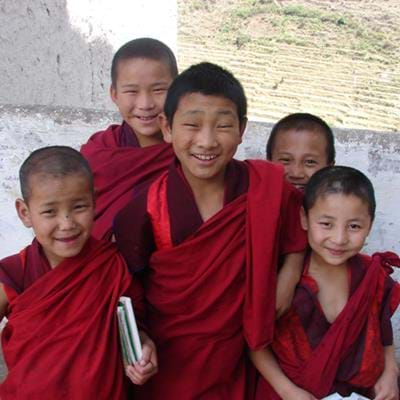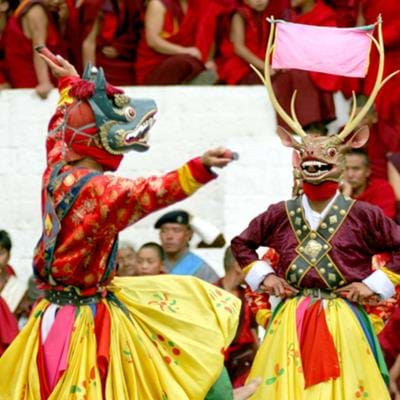Bhutan 04.08.2021 David Abram, reviewed Aug'21
Clinging to a ledge on a near vertical cliff face, against a backdrop of pine-forested mountains and waterfalls, the ‘Tiger’s Nest Monastery’ – or ‘Paro Taksang’ – is to Bhutan what the Saint Pauls Cathedral is to London and the Sistine Chapel is to the Vatican City, Rome. Its mix of refined Buddhist architecture and sublime setting perfectly encapsulate the exotic style and defiant spirit of the Himalayan kingdom. As the country’s defining photo opportunity, the monument attracts a steady stream of visitors. But this one Instagram classic you will have to work for: the monastery may can be reached via a 3-4 hour hike, some of it uphill. So that coveted selfie may require a bit of puff! An ultimately satisfying experience!
In this blog we set everything you need to know to plan your hike, from timing the trip to photographic tips. Booking advice is available by phone, email or live chat with our expert Bhutan consultants at the TransIndus office London, contact details for which appear at the end of this article.
When to Go to Bhutan?
The best periods to travel to Bhutan are from March to May and September through November. At these times the weather is dependably dry and temperatures moderate. Occasional snowfall is possible in March or October, though only a light dusting that won’t impede your trek and makes a picture perfect even more picturesque!
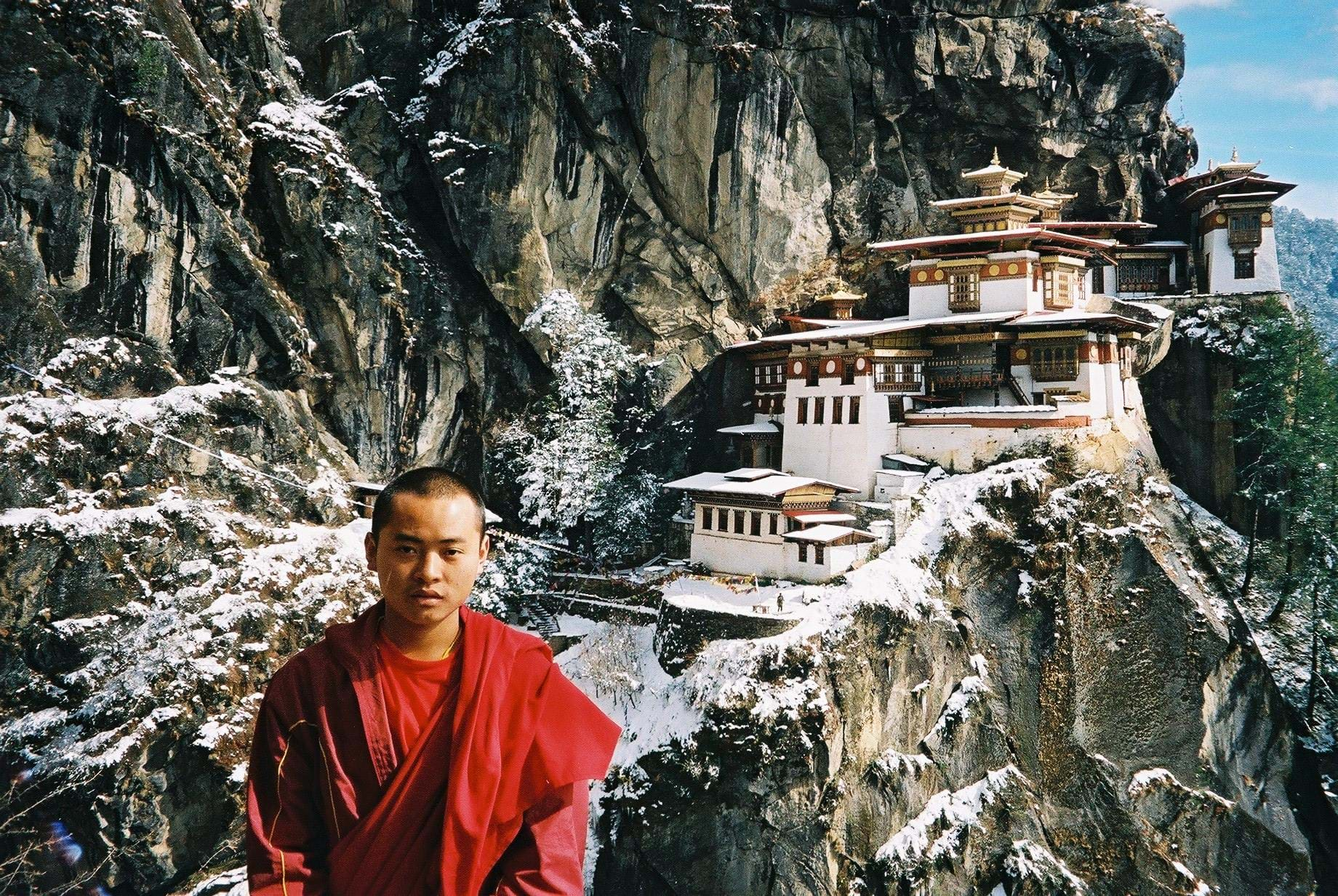
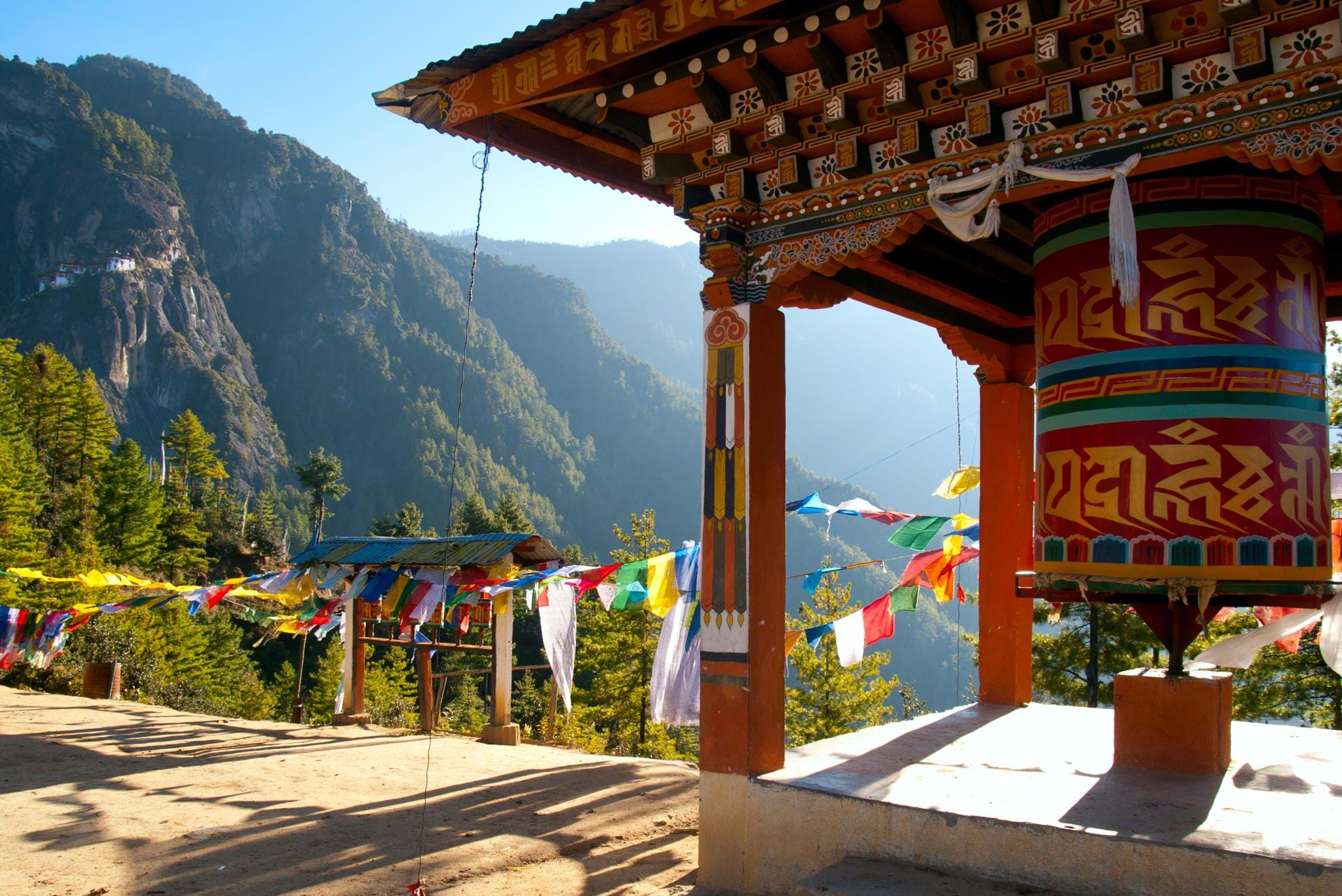
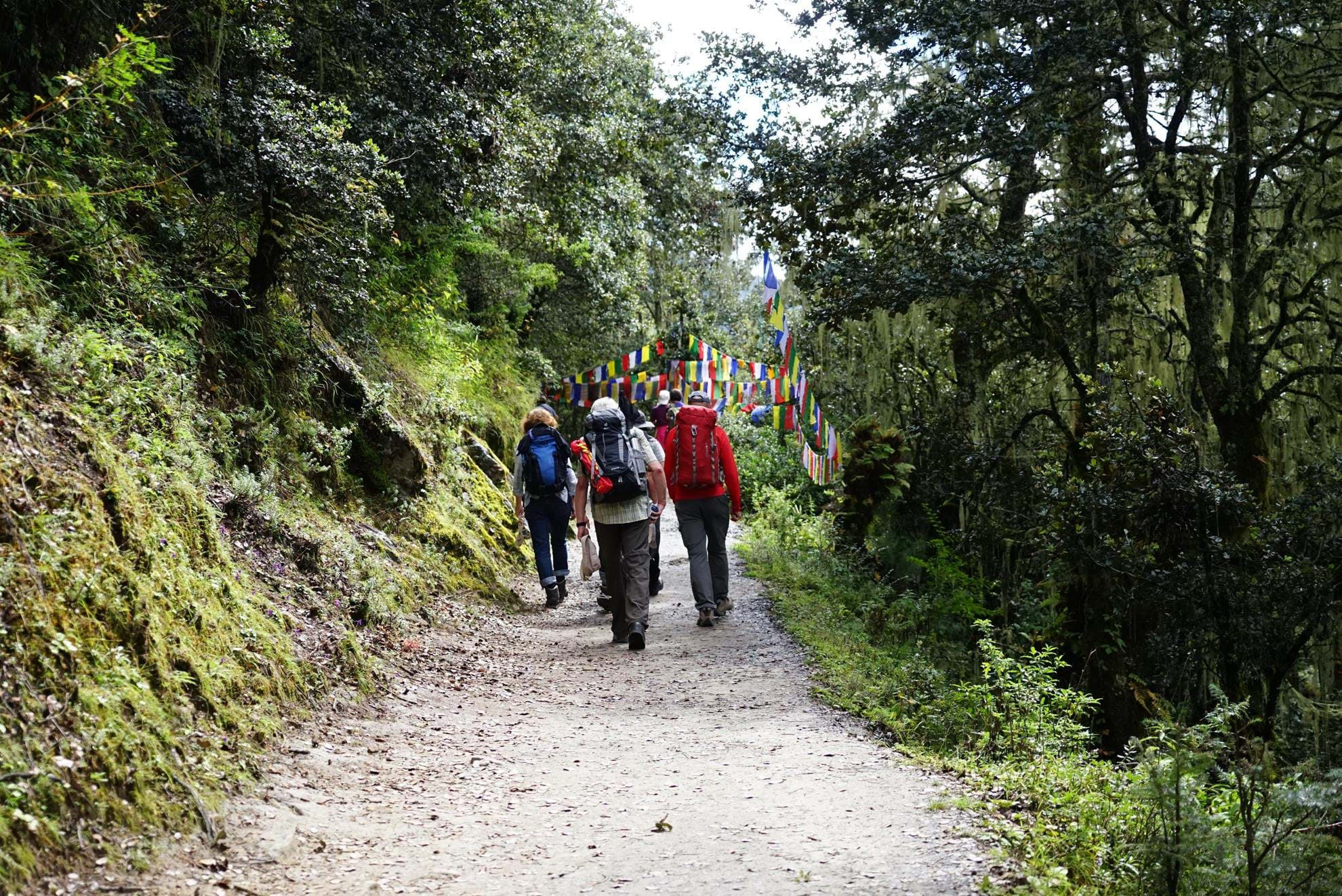
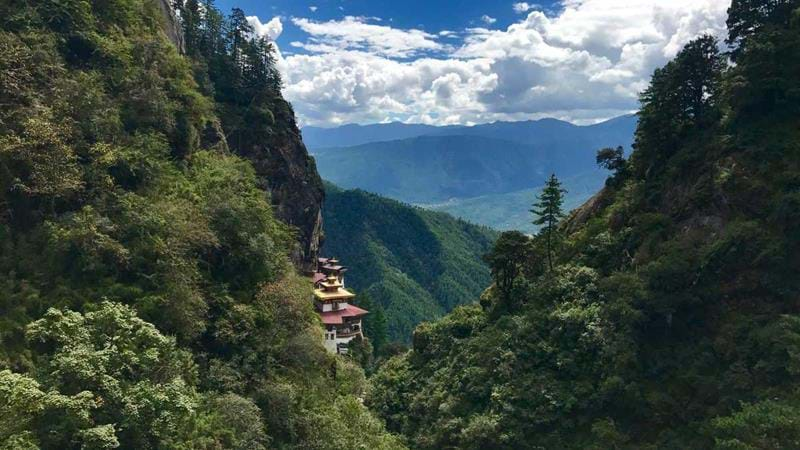
The Tigers Nest Monastery?
Paro Taksang, popularly know as the Tigers Nest Monastry in its present form was constructed at the end of the 17th century, around a sacred cave where generations of monks and saints were known to have meditated. Among them was Guru Padmasambhava, the itinerant missionary who first brought Buddhism to Bhutan in the 8th century. Local legend asserts he flew to the site on the back of a tigress, and remained there meditating for three years, three months, three weeks, three days and three hours precisely.
The original complex was destroyed by fire in 1998, but completely rebuilt and today looks exactly as it did in its prime, with pristine whitewashed walls, gilded roofs and eaves painted the same auspicious burgundy colour used to dye the robes of the resident monks.
There are numerous temples and sanctums spread across the complex, richly painted and decorated in the Tibetan style, with fabulous mythological murals, thangkas and butter sculptures. We recommend visiting as many of the temples as you can for a complete overview of the complex. If they’re not occupied with their studies, young novice monks will probably accompany visitors, using the opportunity to practise their English and show you the traditional Bhutanese games they play in their free time.
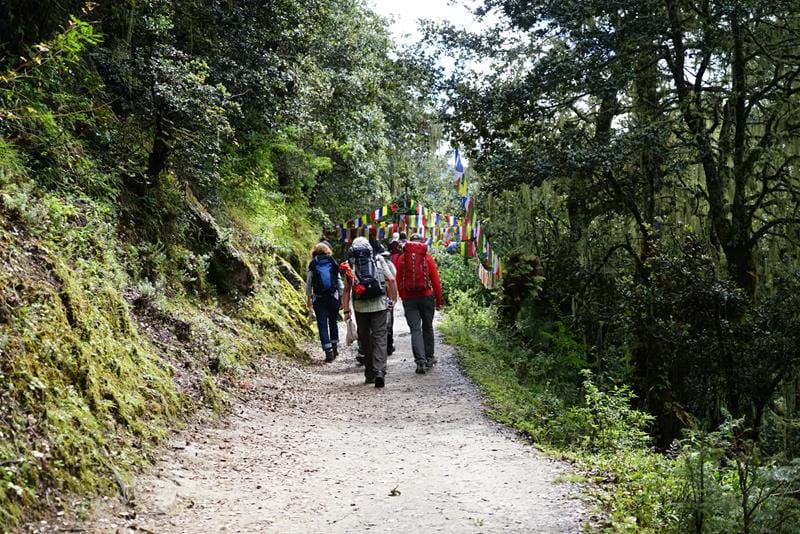
The Hike to Tigers Nest?
The start of the trail to Paro Taksang lies around a half hour’s drive from Paro. Local taxis are available, but if you’re arranged the trip as part of a package with us, then you’ll travel in a luxury saloon car (or air-conditioned bus if you’re on a group tour).
The trek up to Tiger’s Nest Monastery takes between three to four hours, depending on levels of fitness and how much time you spend at incredibly positioned café at the midway point. We recommend starting around 9am and gently zigzag through the winding paths through pine trees, to ascend the gentle gradients, arriving the café-restaurant in time for a much welcome coffee break or an early lunch. For those unable to walk the trail, ponies are available up to the midway point.
From here the trail continues uphill along narrow paths and arrives at a terrace that’s at the same height as the monastery on the opposite side of the ravine – a famous viewpoint where majority of the photos of the monument you’ve seen will have been taken.
From here on the path rises and falls more steeply, winding via a series of staircases over gentle stream gullies, waterfalls, rocky cliffs and fields of moss-covered boulders. Throughout this section, you will be rewarded by more and more amazing views back down the valley and out across the surrounding ridgetops and mountains. A flight of steep steps takes you up the final climb to Paro Taksang itself.

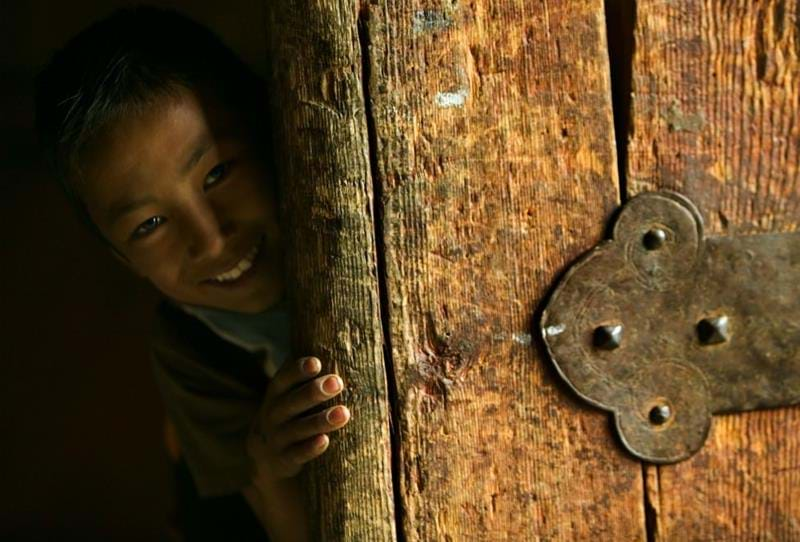
Photography Tips
Due to the duration of the walk, most people arrive at the monastery around midday, when the building is in direct sunlight. This isn’t ideal – camera sensors struggle to cope with the bright reflection off the white walls – but by 3pm in the autumn and spring, the sun will generally have set behind the surrounding ridges, leaving the complex in shadow. The strong backlight may cause problems, but you can easily re-balance the highlights and shadows in post.
For the iconic shot of Paro Taksang from across the ravine, you’ll ideally need a decent zoom lens with a focal range of at least 70mm – perfect for capturing the monastery with its dramatic backdrop.
Do bear in mind that cameras are not allowed inside the sanctum; you’ll have to leave yours, along with your phone, at the safe deposit at the entrance.
Is Bhutan an expensive experience?
Some perceive Bhutan to be expensive for vistors because of its mandatory daily expenditure requirement but that’s not quite true! To be fair to Bhutan, there aren’t many countries in Asia or else where in the world where you can travel comfortably, staying in good hotels, eating well, and accompanied by expert English speaking guides, for under $250! So don’t let talk of the daily tariff put you off.
Currently, the fees are $200 for off peak (Jan–Feb & June–July) and $250 for high season (March–May & Sept–Nov), all of which includes what you spend on cost of accommodation, meals, transport, guides and entry tickets to monasteries and other monuments.
Daytrips are nearly always offered as a package, and Tiger’s Next Monastery is no exception. We will make all the necessary bookings well in advance. You pay for the excursion when you book your holiday.
Anyone looking to keep costs to an absolute minimum should consider visiting Bhutan as part of a Small Group Tour.

